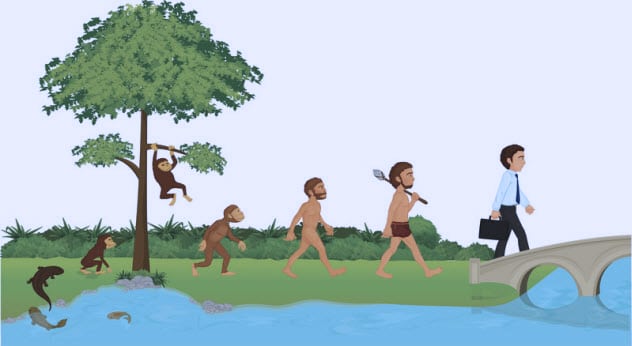 Creepy
Creepy  Creepy
Creepy  Crime
Crime 10 Truly Evil People Who Used Halloween as the Perfect Cover
 Movies and TV
Movies and TV 10 Wildly Different Movie Takes on Nuclear War
 Creepy
Creepy 10 Places Where Folklore Is Alive and Well
 History
History 10 Events That Unexpectedly Changed American Life
 Pop Culture
Pop Culture 10 Cases of Grabbing Defeat from the Jaws of Victory
 History
History 10 Common Misconceptions About the Renaissance
 Weird Stuff
Weird Stuff 10 Crazy Things Resulting from Hidden Contract Provisions
 Facts
Facts 10 Unusual Facts About Calories
 Weird Stuff
Weird Stuff 10 Days of Humiliation When the Person Should Have Stayed in Bed
 Creepy
Creepy 10 Unsettling Ghost Stories to Tell This Halloween
 Crime
Crime 10 Truly Evil People Who Used Halloween as the Perfect Cover
 Movies and TV
Movies and TV 10 Wildly Different Movie Takes on Nuclear War
Who's Behind Listverse?

Jamie Frater
Head Editor
Jamie founded Listverse due to an insatiable desire to share fascinating, obscure, and bizarre facts. He has been a guest speaker on numerous national radio and television stations and is a five time published author.
More About Us Creepy
Creepy 10 Places Where Folklore Is Alive and Well
 History
History 10 Events That Unexpectedly Changed American Life
 Pop Culture
Pop Culture 10 Cases of Grabbing Defeat from the Jaws of Victory
 History
History 10 Common Misconceptions About the Renaissance
 Weird Stuff
Weird Stuff 10 Crazy Things Resulting from Hidden Contract Provisions
 Facts
Facts 10 Unusual Facts About Calories
 Weird Stuff
Weird Stuff 10 Days of Humiliation When the Person Should Have Stayed in Bed
10 Ancient Predictions That Came True
When we contemplate ancient times, we tend to imagine backward thinking, wacky science, and probably pyramids. But, on more than a few occasions, the ancients hit the nail right on the proverbial head.
SEE ALSO: 10 Book Predictions That Really Came True
From evolution all the way to the big bang, so much of modern science has been precipitated by the thoughts and ideas of people who lived over 2,000 years ago. Even without the technology, knowledge, and experimental capabilities of our era, somehow, they still managed to get it right. Sort of.
Here are 10 times that the ancients turned out to be correct.
10 Atoms

In the fifth century BC, a Greek man named Leucippus had a rather striking idea: Everything in the visible universe is made of tiny, indivisible particles. Those who belonged to this school of thought, including the prominent philosopher Democritus, came to be known as the Atomists.[1]
They believed that all objects were constructed from an infinite number of very small pieces of matter that they called “atoms.” (The original ancient Greek word atomos translates to “uncuttable.”) They also thought that different atoms created different materials. Strong objects like iron were made of strong atoms, while water was made of slippery atoms.
This idea of fundamental, tiny particles making up everything in existence also appeared in India in the sixth century BC. At that time, the three most popular religions in that region—Buddhism, Jainism, and Hinduism—all held varying doctrines about how these atoms interacted with the world and what they constituted. But all had the central thesis that these elementary particles existed.
After Aristotle rose to prominence in the philosophical world, his views of science and disregard of all talk of atoms meant that the idea faded into obscurity. It would be another 2,000 years until a 26-year-old clerk named Albert Einstein finally proved their existence in 1905.
9 Thermodynamics

One ancient philosopher whom many attempt to ignore is Heraclitus. This is made rather easy by the fact that we currently only have 100 surviving fragments of his works. However, he is well-known due to the difficulty of interpreting his thoughts.
His entire ontology stems from a monist view that fire is the true reality: Everything in existence is ruled and made by fire. In fragment 30b, we see the most obvious instance of this thought when he refers to the cosmos as an “ever-living fire.”
Although the idea that the universe and all it contains is made of fire isn’t exactly right (we’d definitely know about it if that was the case), Heraclitus is closer than you might think.
The laws of thermodynamics keep the universe turning. Without heat, nothing would happen. Heat is a form of energy that causes transformation and change, while transformation and change keep the cosmic cycle of birth and death going. Although not everything is made of fire, fire and heat keep everything alive and stop the universe from collapsing in on itself.
8 Flux
Heraclitus is known for another piece of wisdom, probably his most famous: “All is in flux.” It appears to be a strange-sounding thought: Everything is in a constant state of motion and change, meaning we can never “step in the same river twice.”
According to Heraclitus, the only constant in life, the universe, and everything is change.
To the human eye, this isn’t the case. If you look at your keyboard, it doesn’t constantly move and change in a state of never-ending flux. Life would be very difficult if it did. On this basis, some interpretations hold that he was referring to some more abstract entity rather than giving a description of reality.
However, quantum mechanics tells quite a different story. According to quantum field theory, everything in the universe is made of extremely tiny particles that are constantly moving and changing beneath the surface of what we can see with the naked eye.[3]
The constant cosmic wiggle of these particles constitutes all the fields (electromagnetic, etc.) that keep the universe—and all the objects within it—in shape and order. If you could see your keyboard up close and very personal, it would be a jumble and jostle of particles in motion.
7 Evolution

Most people attribute one of the most influential and transformative scientific theories to a man named Charles Darwin. In fact, the idea had been around for over 2,000 years before Darwin ever boarded the HMS Beagle.
The first to theorize any kind of evolution was Anaximander of Miletus in the sixth century BC.[4] He held that animals had evolved from creatures in the sea. Using fossils and deductive reasoning, he figured out that, at some point, humans must have adapted to live on the land from their oceanic origins.
Unfortunately, the work that contained this theory was burned, along with 100 others, and so fell into obscurity for a millennium. We only know of it due to an ancient poet writing it down in song and passing it through the ages. One day, an Italian priest in the 14th century came across it and brought it back into the gaze of Western thought.
6 Survival Of The Fittest

In the fifth century BC, a Sicilian philosopher named Empedocles wrote about the origins of species. He had some ideas that would seem very strange to the modern reader—for example, the notion that individual arms, legs, and organs used to spring up from the earth and combine through the power of love to produce the strangest hybrids of creatures.
However, alongside the force of love was a counterforce, strife. This force meant that those creatures that were put together incorrectly could not breed and so would die out. Only the creatures that were lucky enough to be made from the right limbs in the right order would survive and continue on to be the animals that we see today.[5]
This theory is documented as the first attempt to describe the creation of life without a designer and is the predecessor to Darwin’s theory of evolution by natural selection: the notion that only the strongest and most able survive.
5 The Big Bang

Some people credit Stephen Hawking with coming up with the idea of the big bang. However, it was theorized almost 3,000 years earlier in ancient India—but not in the way we may expect.
In the Hindu Rig Veda, it is written that the entire universe is contained in a Brahmanda, a cosmic egg. All of space, matter, and creation exist in this sphere. The universe that we see expanded from a single point, a Bindu, and will eventually collapse into the same single point.[6]
It’s hard to say if the modern theory of the big bang drew influence from these ancient texts, but the core idea of an expanding and contracting universe is strikingly similar.
4 The Divided Self

We tend to imagine ourselves as one coherent “self.” Each of us talks about a singular individual, an “I.”
However, modern psychology has shown that we are many different selves at once. Within our minds, we have a rational, conscious being as well as an emotional, unconscious amalgamation of our physical processes. Both are necessary to operate a human being.
One ancient who theorized the idea of a divided self was Plato. He thought that humans had three competing parts within their souls—reason, appetite, and spirit. He imagined the soul as two horses (appetite and spirit) and a charioteer (reason) trying desperately to keep hold of the reins.[7]
When the three are in harmony and reason wins out, we are at peace and happy. But when our desires and appetites run away with us, we are in a state of internal war and distress. That’s why we feel angry and stressed at our lack of control when we know rationally that we don’t want another plate of food from the buffet but our stomachs guide us there for the fourth time anyway.
3 Reality Is Perception

In the seventh century BC, a group of ancient, pre-Socratic thinkers named the Sophists were the first true relativists. They believed that there was no absolute truth, no absolute reality. For a Sophist, our sensory and mental experience on this planet is completely subjective. No other person will ever experience the world in the same way that we do.[8]
This may seem strange considering that humans appear to have many common experiences. People can identify colors, shapes, smells, and sounds in very similar ways. However, modern experiments have shown that all our sensory experiences are slightly different from those of anyone else due to our unique genetic makeup.
Reality is perception, built and created by the joint work of our minds and sensory organs. Although there may be some absolute reality out there, we’ll never know it.
2 The Spherical Earth

One of the first philosophers was Thales of Miletus, who was born in Ionia in the seventh century BC. He is often credited as being the founder of natural philosophy (the branch of philosophy that paved the way for modern science as we know it).
He investigated the principles that govern creation, questioned the traditional Greek mythology, and attempted to discover the causes and origin of the universe.
The philosopher Aristotle is the main way that we know of Thales’s thought as Aristotle documented and recorded it in his own works. One of the key ideas that he attributed to the first philosopher is the notion of a spherical—as opposed to flat—Earth.
Thales used his knowledge of eclipses to propose that the Sun would cast an elliptical shadow if the Earth was flat. He also noted that the stars seem to move as a person moves. If the Earth was flat, you would see the same stars above no matter where you went. It is said that Thales was once concentrating so hard on tracing the stars that he fell into a well.[9]
It would take over 1,000 years to prove that the Earth was round, as Thales believed. (Even now, there are those who doubt this.)
1 Indeterminism

In quantum mechanics, indeterminism is one of the key building blocks that constitute the theory.
It states that we can never truly know where a particle is until it interacts with something. Free particles move randomly through the universe interacting in a casual and unpredictable way.
Essentially, at the quantum level, it’s hard to be sure of much.
Before quantum theory came to dominate the science scene in the 20th century, it was often thought that everything could be precisely predicted. Whether it was through unquestionable physical laws or the work of the gods, everything happened in a predetermined way.
However, the idea of indeterminism has been around for a much longer time.
For instance, Aristotle factored the idea of chance into his theory of the four causes, something rare during the time he was writing. He stated that some things in nature are mere accidents.
Among the ancients, Leucippus, one of the key Atomist thinkers mentioned earlier, holds the prize for the most accurate description of the quantum world. He believed that atoms are subject to “casual and unpredictable movements, quickly and incessantly,” which is a nearly spot-on description of what actually occurs at the minute level.[10]
Ruth Maia is a science-loving, constantly curious, homosexual Homo sapiens.
Read about more futuristic predictions on 10 Ridiculously Specific Predictions That Came True and 10 Crazy Futuristic Predictions.








